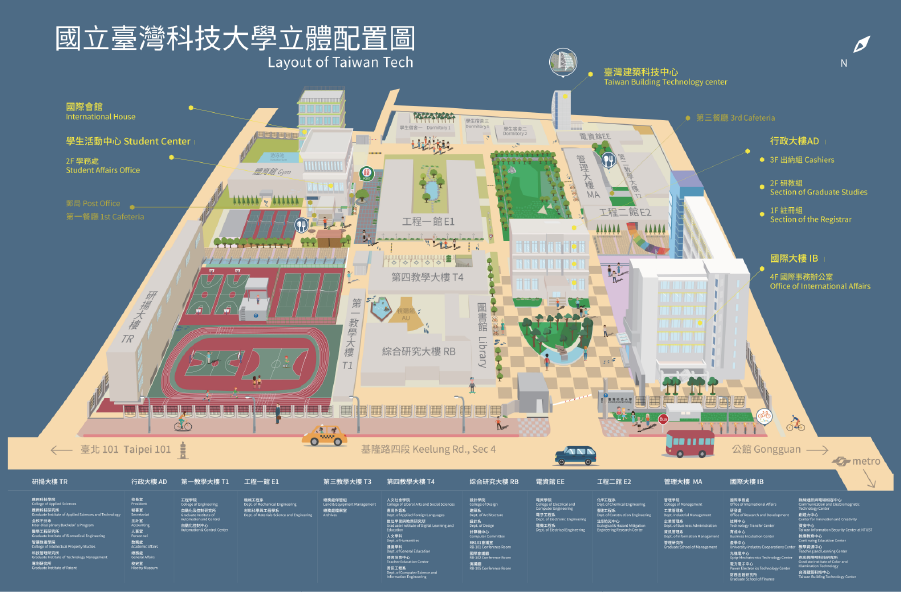Useful Links_Outline of Lectures_P3
|
21. |
Nonlinear Programming |
|
|
A. Introduction to Numerical Optimization B. Fundamentals of Unconstrained Optimization C. Line Search Methods D. Trust-Region Methods E. Conjugate Gradient Methods F. Quasi-Newton Methods G. Large-Scale Unconstrained Optimization H. Calculating Derivatives I. Derivative-Free Optimization J. Non-Least Squares Problems K. Nonlinear Equations L. Constrained Optimization Problems |
|
22. |
Regression Analysis |
|
|
The following topics will be discussed in this course: A. What is regression analysis? B. The simple regression model C. The Least Square Estimation(L.S.E.) D. The Maximum Likelihood estimation(M.S.E) E. What is ANOVA table? F. The regression model in matrix form G.The Multivariate Normal distribution H.The multiple regression model I. Co-linearity Problem J. Dummy variable K. What is Logistic Regression Model L. The estimation for Logistic regression M. The Large Sample theory N. The testing Hypothesis for Logistic regression |
|
23. |
Soft Computing |
|
|
Introduction to Soft Computing A. Artificial Neural Network B. Evolutionary Computation C. Swarm Intelligence D. Artificial Immune Systems E. Metaheuristics F. Fuzzy Systems |
|
24. |
Time Series Analysis and Forecasting |
|
|
Cover the full range of major forecasting methods; provide a complete description of their essential characteristics; provide systematic comparison of the advantages and drawbacks of various methods so that the most appropriate method can be selected for each forecasting situation. Exponential Smoothing, Multiple Linear Regression, Decomposition, ARIMA, Transfer Function, Judgmental Forecasting and Adjustment, Grey Model, Neural Networks Model |
|
25. |
Decision Analysis |
|
|
(1) Stochastic minimum-cost path problems; (2) stochastic equipment replacement models; (3) dynamic inventory control; (4) stochastic linear dynamics and quadratic criteria problems; (5) Bayesian dynamic programming; (6) decision making with imperfect state information; (7) stochastic scheduling problems. |
|
26. |
Reliability Analysis |
|
|
In this semester, we will focus on the reliability analysis for stochastic flow networks. Several factors are discussed, they are capacity, flow, multicommodity, time, and budget. The proposed models are applied to computer system, electric power system, transportation system, logistics system, tele-communication system, etc. |
|
27. |
Numerical Computations |
|
|
This course is a graduate level project-based lecture of concepts, principles and techniques related to numerical computations. This course gives an overview of the foundation of numerical methods and applications. Students are expected to have a hand-on project related to his/her research. The computer software (Matlab or Mathematica) will be introduced to students to practice numerical methods. We will cover topics shown in the followings. |
|
28. |
Psychological Foundations in Human Factors Engineering |
|
|
Systems could impose requirements on human user that are incompatible with the way people process information (attend, perceive, think, remember, decide, and act) Bridge the gap between system design and theoretical research in cognition and experimental psychology and human performance.Master human information processing model for describing human cognition and information flow from the senses, through the brain, to action) and different system components such as displays, controls, computers and keyboards. Evaluate human effort (workload) and human performance under various task conditions. Learn the basic concepts of attention, pattern recognition, memory, decision making, learning, training, and stress and human error. |
|
29. |
Physiological Foundations in Human Factors Engineering |
|
|
This is an advanced ergonomic course for graduate student in industrial management. We will examine various factors affecting human physical performance in industries. In the course, the regulatory mechanism of various body functions at rest and during work will be introduced, elementary human anatomy, physiological and biomechanical events will be explained, and most important of all, design and redesign issues of task in the workplaces will be exercised. |
|
30. |
Organization Ergonomics |
|
|
To introduce some of the topics which are studied and discussed in the field of organization ergonomics. Students are expected to understand the different issues organizational members might encounter in the organizations. What are the causations of these issues; what are the theories can explain these issues; and how can the organizations and their member deal with them? |
|
31. |
Industrial Safety |
|
|
This course will give lectures on two main topics of the industrial safety field. They are "Industrial Safety Engineering" and "Risk Assessment". Students will be learning both the technological and scientific aspects of the field. This course will help students understand the job content of a Safety Specialist, and help them to prepare the National Technician Examination. |
|
32. |
Applied Ergonomics |
|
|
The application of ergonomics in product design and workplace. A. To apply knowledge in designing jobs, consumer products, workplaces, and equipment, accommodating the limits of human performance and exploiting the advantages of the human in the process. B. To apply data and methods developed by human factors profession to a variety of products, jobs, and systems. C. Disciplines related to human factors include biomechanical engineering, engineering psychology, industrial design, industrial/system engineering. |
|
33. |
Risk Management and System Safety |
|
|
A. Outline and describe the origins of system safety; B. Describe and apply the concept of Risk Management; C. Apply the techniques of system safety analysis to equipment, facilities, processes or products; D. Apply the techniques of system safety analysis to the selection/ranking of candidate countermeasures that can reduce risk; E. Describe the advantages and disadvantages of the various system safety analytical techniques; and F. Describe the regulatory drivers for process/system safety programs. |
|
34. |
Products Design and Development |
|
|
Discussion of fundamental and emerging topics in product design and development, including basic methodologies, collaborative product development, concurrent engineering, and mass customization, and guest lectures on intellectual property. |
|
35. |
Manufacturing Information Processing |
|
|
Discussion of fundamental and emerging topics in product design and development, including basic methodologies, collaborative product development, concurrent engineering, computer-aided tools, mass customization. |
